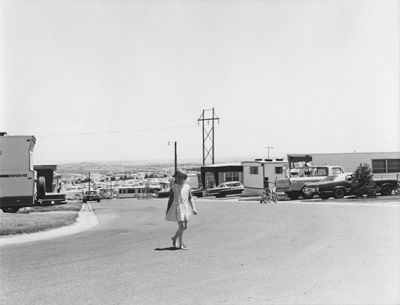
Robert Adams, "Adams County, Colorado," 1973 Courtesy Fraenkel Gallery, San Francisco and Matthew Marks Gallery, New York
The LA Times’ Leah Ollman hit it on the head last month when she wrote in Art in America:
To embrace opposing emotions can yield frictional sparks and wonderfully uneasy tension; it can complicate and deepen the response a work generates.
Ollman was discussing the work of Robert Adams in her excellent article, Romantic Realist, as well as the current retrospective, “Robert Adams: The Place We Live” at the Los Angeles County Museum of Art. While Adams himself may admit to being in pursuit of beauty through his photography, his work clearly highlights, “…where and how nature and culture meet”- for better or worse.
Teaching with and sharing Adams’ photography with students can allow for a broader understanding of what makes a great picture. Do we look for precise technical qualities, superb composition and a story the viewer can take away, or do we allow for ambiguity and multiple story lines in photos that simultaneously transport the viewer and force them to hold up a mirror? Adams talks about telling the truth and having to “simultaneously accept what one had to accept” during the Exclusive video, “Robert Adams: Working Along Freeways”. His photo of a garbage truck, while inducing “revulsion” in Adams’ words, is beautiful at the same time. His photo of a young girl walking through a huge trailer court evokes loneliness and sadness while depicting an extraordinary light and landscape.
In Art21’s season 4 educator guide, one of the activities suggested after viewing Robert Adams’ segment asks students to create a visual essay of their own region using books, newspaper and magazine articles, the internet, and interviews with teachers, neighbors… even family members. Through the process of gathering these kinds of images, there is an opportunity for students to see the parallels of beauty and ugliness in change. Working with Adams’ photos, students can further their understanding of how ambiguity, ambivalence and uncertainty play a role in making works of art that affect the viewer on multiple levels and push the definition of what can be beautiful, not to mention illuminating.



